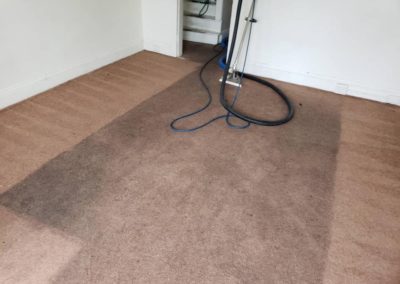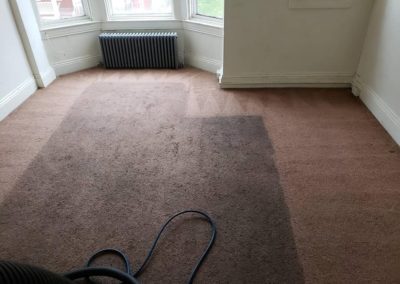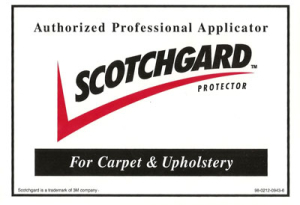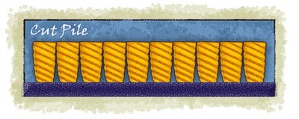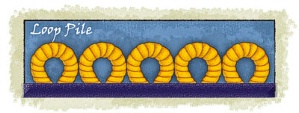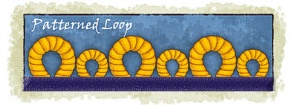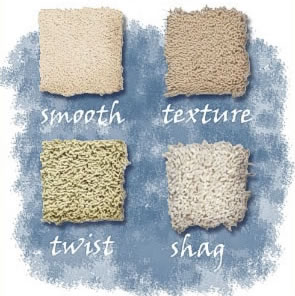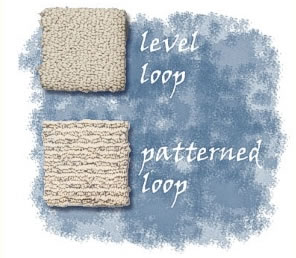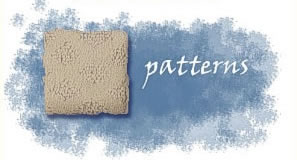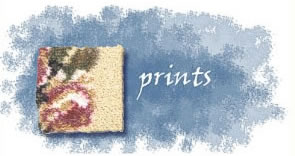Carpet Cleaning
Suffering with dirty or stained carpets?
Call 717-846-8446 for
professional carpet cleaning.
Carpet Cleaning and Care Tips
New carpet represents a substantial investment and, like your other fine furnishings, requires proper care to keep it attractive over the years to come. Carpet rarely wears out in terms of fiber wearing away, but its appearance deteriorates over time and becomes less attractive. You can protect your investment, prolong the life of your carpet, and improve the quality and beauty of the indoor environment by establishing a regular carpet cleaning schedule.
Preventive Maintenance
- Walk-off mats should be used at all entrances to absorb soil and moisture, and mats should be cleaned on a regular basis so they don’t become sources of soil themselves, especially during inclement weather. Try to keep your sidewalks and entrance ways free of excessive dirt and substances which can be tracked into the home.
- Use a quality pad under your carpet, particularly on stairs. Good pad not only gives better resilience underfoot, but it can also add to the life of your carpet. Some carpets carry warranties with specific density and thickness requirements. Before purchasing your carpet pad, review your warranty.
- Move heavy furniture occasionally to avoid excessive pile crushing. Put coasters intended for use with carpet under the legs of tables, chairs, and other furniture to help distribute the weight and prevent crushing the pile. Do not use chairs or appliances with rollers or casters on carpet without a chair pad designed for carpet. Continued use without a chair pad can cause damage to the carpet.
- When moving heavy wheeled furniture (pianos, buffets, etc.), prevent damage by placing a protective barrier of heavy cardboard or plywood between the wheels and the carpet.
- If you use area rugs over your carpet, be sure to remove and clean them regularly. Clean and restore the pile of the carpet underneath. Be certain to check area rugs for colorfastness before putting them back over carpet, as the dyes in some rugs may bleed through to carpet. After cleaning your carpet, remember to allow complete drying before replacing rugs.
- Protect your carpet from prolonged periods of direct sunlight with blinds, shades, or awnings. PLEASE NOTE: NO CARPET IS ABSOLUTELY STAIN PROOF. SOME CARPETS HAVE STAIN RESISTANT TREATMENTS TO IMPROVE YOUR ABILITY TO CLEAN UP STAINS, NOT PREVENT STAINS. CARPETS WITH SOIL RESISTANT TREATMENTS REDUCE THE RATE OF SOILING, BUT ALL CARPETS REQUIRE REGULAR CARE AND MAINTENANCE.
Stain Versus Soiling
It should be noted that there is often confusion about the difference between soiling and staining, and the majority of stain complaints are actually soil-related. For example, many sugar based spills, such as soft drinks and coffee, leave a sugar residue after removal; this sticky residue readily attracts soil from ordinary shoe traffic, and the resulting discolored area appears to be a stain. The same thing happens when spills are cleaned with a detergent solution and the area is not sufficiently rinsed with plain water, leaving a sticky detergent residue. It is important to rinse thoroughly with water and blot dry after removing any spill.
Vacuuming
The most important step in caring for your carpet is vacuuming. Vacuum thoroughly and frequently, particularly in high-traffic areas. Bear in mind that walking on soiled carpet permits the soil particles to work their way below the surface of the pile where they are far more difficult to remove and can damage the fibers. Frequent vacuuming removes these particles from the surface before this happens. For rooms with light traffic, vacuum the traffic lanes twice weekly and the entire area once weekly. Those areas with heavier traffic require that the traffic lanes be vacuumed daily and the entire area twice weekly. Up to three passes of the machine will suffice for light soiling, but five to seven passes are necessary for heavily soiled areas. Change the vacuuming direction occasionally to help stand the pile upright and reduce matting.
Spot and Spill Removal
A good checklist to handle spills should include the following items. Do not use any household cleaners other than those listed, since many household products contain chemicals that may permanently damage your carpet. Recommended Cleaners:
- A solution of a mild liquid detergent (no more than 1/4 teaspoon of detergent to 32 ounces of water). A clear, non-bleach liquid dishwashing detergent such as Dawn, Joy, or clear Ivory is recommended for carpet cleaning. Do not use detergents that are cloudy or creamy because they may leave a sticky residue.
- A solution of 1 part white vinegar to 1 part water.
- White cloths or white paper towels.
- An ammonia solution of one tablespoon of ammonia to one cup of water. Do not use on wool or wool-blend products.
- Non-oily nail polish remover.
- Chewing gum remover (freeze or solid type).
- Spot remover specifically for grease, oil, or tar, such as Carbona or Energine.Note: Difficult stains on carpets made from solution-dyed fibers such as polypropylene (olefin) and solution-dyed nylon may be removed with a mild bleach solution (one part chlorine bleach to five parts water). WARNING: Do not use bleach solution unless you are absolutely certain your carpet is 100% solution dyed. Carpet dyed by other systems will be damaged if in doubt, call your carpet’s manufacture.
General Instructions:
Prompt attention to spots and spills is essential. No carpet is stain proof, although many are stain resistant, which allows time to act.
- Remove as much of food spills as possible by scraping gently with a spoon or dull knife.
- Absorb wet spills as quickly as possible by blotting repeatedly with white paper or cloth towels.
- Always blot; never rub or scrub abrasively, as a fuzzy area may result. When blotting, work from the outer edge in toward the center of the spot to avoid spreading the spill.
- Always follow up with water to remove detergent residue that may become sticky and cause rapid re-soiling.
- Draw out any remaining moisture by placing several layers of white towels over the spot and weigh them down with a heavy object that will not transfer color, such as a plastic jug of water.
Stain Removal Procedures:
The following recommendations should be used for spot cleaning.
- Water Soluble Stains – Absorb as much as possible with white towels. Blot the stained area with white towels dampened with cool water until there is no more transfer of the stain onto the towels. If any of the stain remains, use the detergent solution previously described. Spray lightly onto the spot and blot repeatedly with white towels, working from the outer edge in toward the center of the spot to avoid spreading. Rinse thoroughly by spraying with clean water, and then blot or extract. Do not use too much detergent because the residue will contribute to rapid re-soiling.
- Oil-Based Stains – Blot as much as possible with white paper towels. Apply the special oil and grease spot remover to a paper towel and repeat blotting. (Protective gloves should be worn, as the solvent will quickly remove oils from the skin and could result in irritation.) Do not pour or spray directly on the carpet pile, as damage to the backing or adhesive underneath could result; use the towels to transport the solvent to the carpet. Repeat as often as necessary. Provide adequate ventilation! Do not use flammable solvents!
- Freeze Stains – such as chewing gum and candle wax with ice or a commercially available product in an aerosol can. Shatter with a blunt object and vacuum before the chips soften.
- Bleach – WARNING – Only carpets which are solution dyed are resistant to bleaching, but do not exceed the recommended concentration. DO NOT USE THIS PROCEDURE UNLESS YOU ARE ABSOLUTELY CERTAIN THE CARPET IS SOLUTION DYED – CARPETS DYED BY OTHER SYSTEMS WILL BE DAMAGED. Products with olefin and nylon blends cannot be exposed to bleach without removing the color from the nylon fibers unless the nylon component is solution dyed. If in doubt, call your carpet’s manufacture. For solution-dyed carpets with stains such as food dyes, fruit drink, and coffee not removed by A-1, use a solution of one part chlorine bleach to five parts water. Rinse several times with water to remove excess bleach so that none is tracked to other areas where there is conventionally dyed carpet.
Note: Even though vacuuming can remove most of the dry soil, it is also necessary to clean your carpet on a regular basis to remove the oily, sticky soil that builds up in the pile as a result of cooking vapors, air pollution, and tracked-in dirt. The particles of oily soil deposited on carpet fibers can cause gradual but significant dulling of delicate pastel colors; the color isn’t lost but is hidden under the film. If this type of soil is allowed to accumulate, it begins to attract and hold the dry soil. This is the reason cleaning is so important when dulling of the color is first noticed; if allowed to remain too long, it becomes gummy and difficult to remove. Warning: Certain products found in most homes can cause irreparable damage to your carpet. Bleaches, tile cleaners, mildew removers, oven cleaners and drain openers are very strong chemicals that can discolor or dissolve carpet fibers. Acne medications containing benzyl peroxide, a very powerful bleach, are capable of permanently damaging your carpet and most other fabrics as well. If carpet is cleaned before it becomes too unsightly, the cleaning chore will be easier and more successful. It is a myth that cleaning the carpet before it is absolutely necessary will cause it to get dirty faster. Carpet in a typical household should be cleaned every 12 to 18 months depending upon the number of residents and amount and type of activity. Choice of the proper cleaning system is important. Some systems may leave residues which promote re-soiling and defeat the whole purpose of cleaning. The recommendations below represent the best current knowledge and should help prolong the time between cleanings.
Do-it-yourself systems
If you decide to rent a steam cleaning machine and do it yourself, check several cleaning systems before making a selection. Most rental units available do not adequately clean and may actually damage the carpet. Consider the following:
- Some rental companies have cleaning equipment that is similar to what the professionals use. The cleaning equipment should have enough vacuum power to allow the carpet to dry within 6 to 12 hours after cleaning. Avoid rental units found in many retail and grocery stores that do not have enough power to extract the cleaning solutions from the carpet adequately and which may actually damage the carpet due to over wetting.
- Avoid over wetting the carpet. Prolonged dampness may promote growth of mildew and bacteria in the carpet or cause separation of the backing. A carpet that is wet for more than 24 hours could develop a growth of mold and mildew. This is controlled by a combination of proper equipment and operator training. Most problems in do-it-yourself carpet cleaning are due to over wetting and use of excessive detergent.
- Use a cleaning solution with a pH less than 10, preferably near 9, and with a minimum of non-sticky residue. The attraction between the detergent and the particles of soil and oil is critical during the cleaning process. However, the detergent residue continues to attract the particles after cleaning. Increasing the amount of cleaning solution beyond the recommended level does not greatly increase cleaning performance, but makes the removal of detergent more difficult. Because buildup of detergent residue is the most common cause of accelerated re-soiling complaints, do not use extra cleaning solution. Carpet manufactures recommend a clear water rinse after cleaning your carpets.
- Carpet with stain resistant treatments must be cleaned with products formulated for this purpose, or the stain resistance will be impaired and the warranty voided. Do not use cleaning or spotting solutions that contain bleaches or optical brighteners because they can discolor the carpet.
The steam cleaning system
Carpet Manufactures recommends the hot water extraction system, which research indicates provides the best capability for carpet cleaning. This system is commonly referred to as “steam cleaning,” although no steam is actually generated. The process consists of applying a cleaning agent onto the pile and using water in the extractor to recover the used solution and soil. This can be done from a truck-mounted unit outside the home with only the hose and wand brought inside or, where a truck-mounted unit cannot reach, by a portable system brought into the home.
Professional carpet cleaners
It is to your advantage to use professional cleaners because their experience enables them to do a better job than you can do yourself. Their equipment has more extraction power than the rental units available to you, and the carpet should dry more quickly. True professionals have also made the investment in training to understand the equipment, to know the proper cleaning agents for the situation at hand, and to recognize the differences in fibers and carpet construction. One way to locate a professional cleaner is to contact the Institute of Inspection, Cleaning and Restoration Certification (IICRC) at 1-800-835-4624. This organization maintains a national directory of independent professional cleaners who are trained and certified in a variety of cleaning specialties.
Bonnet Cleaning Systems
Bonnet cleaning systems employ a rotating bonnet of terry cloth or other absorbent material to agitate the carpet pile and absorb soil. A detergent solution is sprayed onto the pile and then worked with the bonnet attached to a rotary floor polisher. Carpet manufactures do not recommend this cleaning system. The bonnet system has very limited capability for soil removal and leaves much of the detergent in the pile since it employs no real extraction. As a result, rapid re-soiling often occurs. Another disadvantage is that the spinning bonnet may distort the fibers of cut pile carpet, fuzzing the pile and leaving distinct swirl marks.
Do-it-yourself systems
If you decide to rent a steam cleaning machine and do it yourself, check several cleaning systems before making a selection. Most rental units available do not adequately clean and may actually damage the carpet. Consider the following:
- Some rental companies have cleaning equipment that is similar to what the professionals use. The cleaning equipment should have enough vacuum power to allow the carpet to dry within 6 to 12 hours after cleaning. Avoid rental units found in many retail and grocery stores that do not have enough power to extract the cleaning solutions from the carpet adequately and which may actually damage the carpet due to over wetting.
- Avoid over wetting the carpet. Prolonged dampness may promote growth of mildew and bacteria in the carpet or cause separation of the backing. A carpet that is wet for more than 24 hours could develop a growth of mold and mildew. This is controlled by a combination of proper equipment and operator training. Most problems in do-it-yourself carpet cleaning are due to over wetting and use of excessive detergent.
- Use a cleaning solution with a pH less than 10, preferably near 9, and with a minimum of non-sticky residue. The attraction between the detergent and the particles of soil and oil is critical during the cleaning process. However, the detergent residue continues to attract the particles after cleaning. Increasing the amount of cleaning solution beyond the recommended level does not greatly increase cleaning performance, but makes the removal of detergent more difficult. Because buildup of detergent residue is the most common cause of accelerated re-soiling complaints, do not use extra cleaning solution. Carpet manufactures recommend a clear water rinse after cleaning your carpets.
- Carpet with stain resistant treatments must be cleaned with products formulated for this purpose, or the stain resistance will be impaired and the warranty voided. Do not use cleaning or spotting solutions that contain bleaches or optical brighteners because they can discolor the carpet.
Carpet Performance Problems
Sprouting
If loose ends or “sprouts” extend above the rest of the pile, clip them off even with the pile surface. Never try to pull them out. After clipping, smooth the area with your fingers. Sharp edges on your vacuum cleaner, a child’s toy, high heels, or animal claws can cause this condition.
Pile Crushing
All carpet fibers will crush under heavy stationary loads. Crushing can be reduced by shifting furniture regularly. Crushed areas can usually be improved by covering the area with a damp, clean white cloth and then applying heat to the cloth with an electric iron on the lowest setting. To ensure that the iron does not damage carpet fibers, test carpet in an inconspicuous location such as a closet. Remove the cloth and restore the pile while it is still hot by brushing it lightly. Keep traffic off the carpet until it is dry.
Shading
After certain carpet styles have been subjected to traffic, you may notice areas that appear lighter or darker than other areas. Don’t be alarmed. Shading is the result of the change in direction of the pile due to pressure from footsteps and vacuuming. Brushing the pile all in one direction may temporarily correct shading; however, shading is part of the carpet styling and should be expected in varying degrees. Do not mistake shading for color fading.
We are IICRC / Clean Trust Certified!
Types of Carpet
The manufacturing of carpet – which can be described as sewing strands of yarn into a backing material – creates thousands of yarn loops. When the loops are cut, a CUT PILE carpet is created, often known as PLUSH. When the loops remain uncut, a LOOP carpet is created, often known as BERBER. These two options can be combined to create FOUR construction possibilities…
Cut Pile
Loops are cut.
Loop Pile
Loops remain uncut.
Patterned Loop
Uncut loops with multiple heights.
Cut & Loop
Cut and uncut loops are combined.
Plush (Cut Pile) Styles
Smooth (known as a Saxony)
This style of cut pile carpet is achieved when the tufts of yarn are sheared to a low, smooth pile height for uniform color and a formal look.
Texture
This popular style offers a smooth, level finish, but the yarns have more twist, which creates a less formal look.
Twist (known as a Frieze)
The yarns in this style are even longer, creating a soft, comfortable, casual appearance.
Shag
The yarns in this style are even longer, creating a soft, comfortable, casual appearance.
Loop Styles
Level Loop (often called a Berber)
In this style, all the loops are the same height. The dense, firm surface of a loop pile carpet makes it ideal for high-traffic areas.
Patterned Loop
The yarns in this style are also looped, but they are at two or three varying heights. The various heights can be arranged to create a wide range of patterns and textures.
Patterns
Pattern carpets beautifully blend loops and cuts in varying heights for dramatic, unique patterns, ranging from floral designs to geometric to pin-dot.
Prints
As the name suggests, these carpets feature a design printed directly onto the carpet for a stylish, often dramatic look.
Just what are traffic lanes, wear patterns and pile distortion? Here is some basic information from Squeegee Klean to help you understand them.
Traffic Lanes
These are about what you would picture in your mind. They often times look like general “lanes” of wear or discoloration where people walk. A lot of people call them the traffic areas. It is the highest trafficked areas on a flooring surface (whether it is a rug or carpet). Most people are creatures of habit and you will see this in front of your favorite chair and how you walk there regularly. These traffic lanes are generally darker and more discolored than the rest of the carpet.
Wear Patterns
These are areas across the pile of the carpet that are usually large and easily seen. You will see this in areas of heavy usage, such as halls, doorways and entry ways. When these areas are not regularly cleaned and maintained the can become permanent damage. Lower performing fibers can and will often completely break down. This can also include having bare spots, where the foundation of the carpet or rug is visible. One example of a low performing fiber is faux silk. There are others, but this is the one most often seen.
Pile Distortion
Then there is pile distortion. This is when the fibers are becoming untwisted and lighten by regular traffic wear. (See this article to learn all about types of carpet construction.) Traffic patterns may ‘teach’ your carpet fibers to lay in the incorrect direction and the fibers to become untwisted.
When fibers become untwisted, they can become discolored in an area that was not meant to have direct sunlight. Some lower performing fibers (such as mentioned above) will not hold their intended shape even with the most careful of usage and begin to show dark or bare spots. When this type of damage occurs no amount of grooming or cleaning will make it go back to its intended state.
How can you prevent this from happening?
The first is regular maintenance. Through, regular vacuuming is vital.
Move your furniture and rotate your area rugs. This will help reduce the traffic lanes and wear spots.
Regular professional cleanings. A good carpet technician will be able to help you keep your carpets and rugs looking their best. Even the most expensive carpet out there will last longer with regular maintenance cleanings. These should be done at least once every 12-18 months or sooner if need be. Be sure to use only IICRC certified technicians (such as those here at Squeegee Klean) to help keep your carpets warranty valid. (Be sure to read the entire warranty to know when and how often your manufacture requires professional cleanings).

